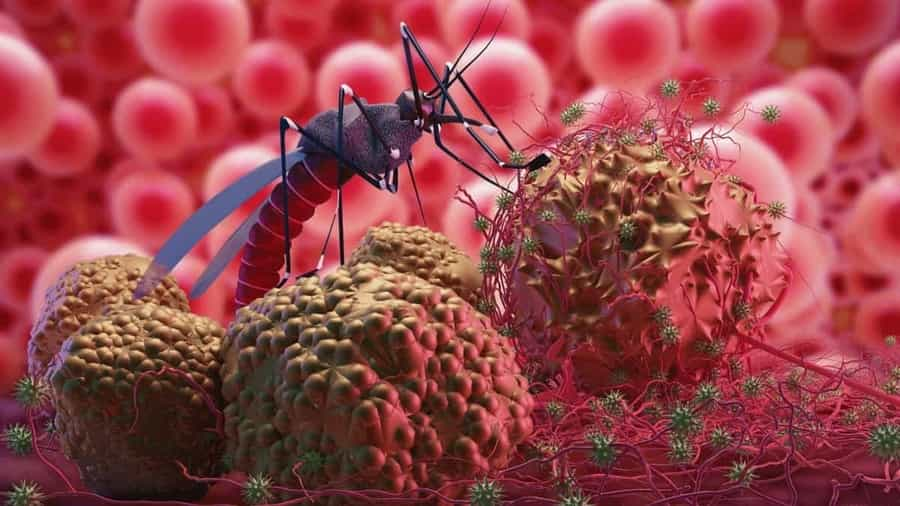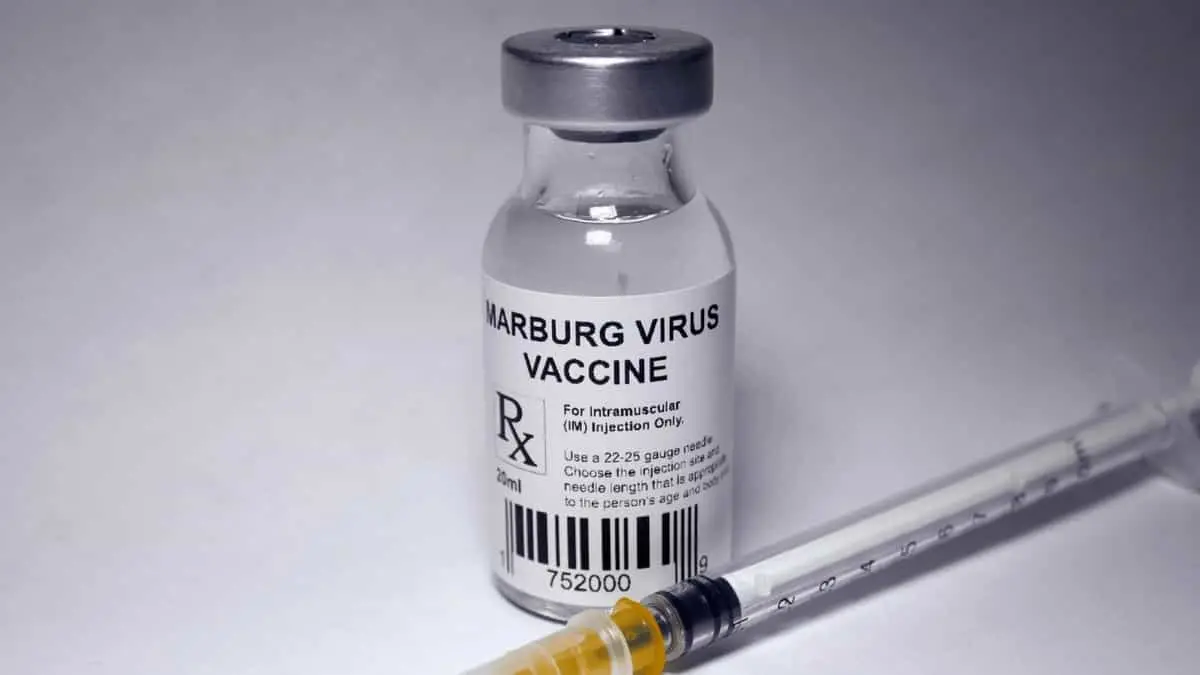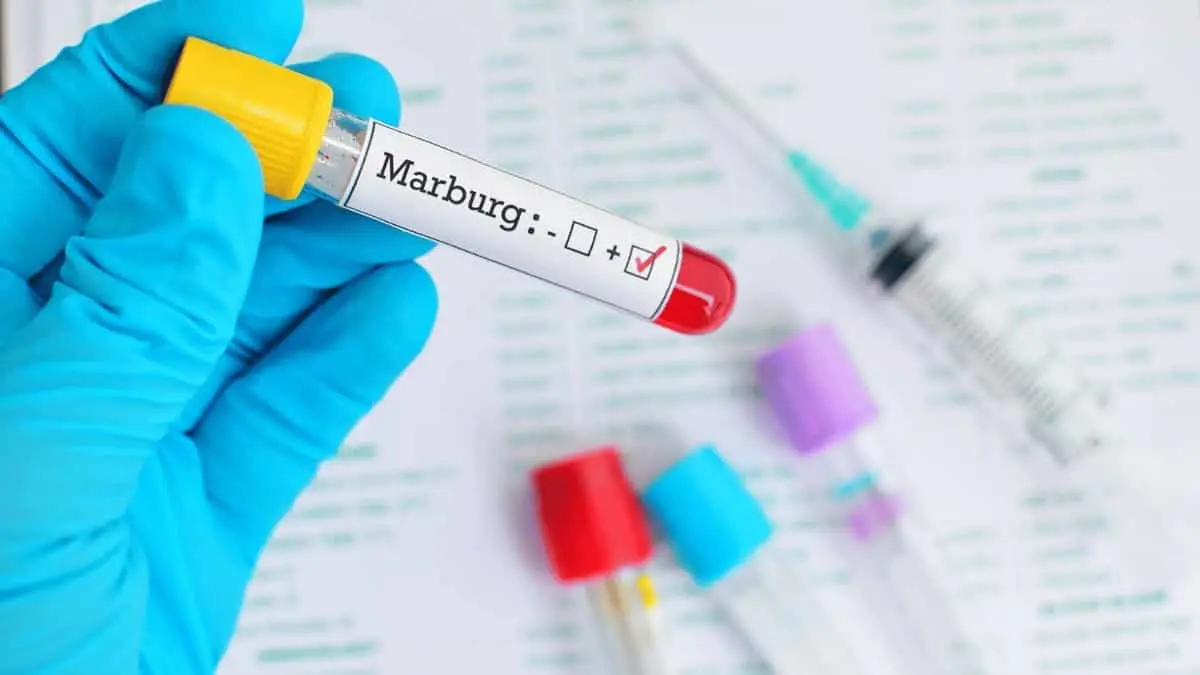Introduction

A. Overview of Marburg Virus
Marburg virus is a highly infectious and potentially fatal virus that belongs to the family Filoviridae. The virus causes Marburg virus disease (MVD), which is a severe form of hemorrhagic fever in humans and nonhuman primates. The virus was first identified in 1967 during an outbreak in Marburg, Germany, where it was traced back to African green monkeys that had been imported from Uganda. Since then, there have been several outbreaks of MVD in Africa, including the most recent outbreak in 2022 in Guinea.
B. Historical background and discovery
The Marburg virus was first identified in 1967 during an outbreak in Marburg, Germany. The outbreak occurred in laboratory workers who had been exposed to African green monkeys that had been imported from Uganda for research purposes. The workers developed symptoms of a severe hemorrhagic fever, and the virus was subsequently isolated from their blood samples. The virus was named after the city where the outbreak occurred.
C. Transmission and incidence
Marburg virus is primarily transmitted through contact with infected bodily fluids, such as blood, saliva, vomit, urine, and feces. The virus can also be transmitted through close contact with infected animals, such as fruit bats, primates, and rodents. The incidence of MVD is relatively low, but outbreaks can occur sporadically in Africa. The mortality rate of MVD can be as high as 90%, making it a highly dangerous and lethal virus.
Epidemiology and Transmission

A. Geographical distribution
Marburg virus is mainly found in Africa, specifically in Central and East Africa. The virus has been isolated from several species of fruit bats, which are thought to be the natural reservoirs of the virus. The virus has also been isolated from several species of primates, including African green monkeys, chimpanzees, and gorillas.
B. Risk factors and mode of transmission
The primary risk factors for contracting the Marburg virus are contact with infected animals or their bodily fluids and contact with infected human bodily fluids. The virus can be transmitted through direct contact with infected fluids or through contact with contaminated surfaces, such as medical equipment or clothing. Healthcare workers, laboratory personnel, and individuals who handle infected animals or animal products are at an increased risk of contracting the virus.
C. Incubation period and clinical manifestation
The incubation period of the Marburg virus ranges from 2 to 21 days, with an average of 5 to 10 days. The initial symptoms of MVD are flu-like and include fever, headache, muscle pain, and fatigue. These symptoms are followed by more severe symptoms, such as vomiting, diarrhea, abdominal pain, and hemorrhagic manifestations, including bleeding from the gums, nose, and rectum. The virus can also cause severe organ damage and can be fatal in some cases.
Pathogenesis and Diagnosis

A. Entry and replication of the virus in the host
Marburg virus enters the host cell by binding to specific receptors on the cell surface. Once inside the cell, the virus begins to replicate and produce new viral particles. The virus can infect several types of cells, including macrophages, dendritic cells, and endothelial cells.
B. Immune response and pathogenesis
The immune response to the Marburg virus is complex and involves both innate and adaptive immune mechanisms. The virus can evade and suppress the host’s immune response, leading to severe disease and tissue damage. The pathogenesis of MVD is not fully understood, but it is thought to involve the virus’s ability to cause widespread inflammation and damage to multiple organs.
C. Diagnostic tests and methods
The diagnosis of Marburg virus infection can be challenging because the initial symptoms of MVD are similar to those of other viral infections. The diagnosis is usually confirmed by laboratory tests, including PCR (polymerase chain reaction) to detect viral RNA in blood or other bodily fluids, ELISA (enzyme-linked immunosorbent assay) to detect the presence of viral antigens or antibodies, and virus isolation in cell culture.
Rapid diagnostic tests have also been developed, including lateral flow assays and point-of-care tests that can detect viral antigens or antibodies in blood or serum within a few minutes. These tests can be useful in resource-limited settings where laboratory facilities are not available.
It is important to note that all diagnostic tests for the Marburg virus should be performed in a biosafety level 4 (BSL-4) laboratory to prevent the accidental release of the virus.
Treatment and Prevention

A. Supportive care and management
There is currently no specific treatment or cure for Marburg virus infection. The treatment of MVD is mainly supportive, and patients are managed in the hospital with fluids, electrolyte replacement, and supportive care for any complications that may arise, such as bleeding or organ failure.
B. Antiviral drugs and other experimental treatments
Several experimental treatments are being developed for Marburg virus infection, including antiviral drugs, monoclonal antibodies, and RNA-based therapies. These treatments are still in the early stages of development and have not been approved for use in humans.
C. Prevention and control measures
Prevention and control measures for Marburg virus infection include avoiding contact with infected animals or their bodily fluids, practicing good hand hygiene, using personal protective equipment (PPE) when handling infected animals or patients with suspected or confirmed MVD and implementing infection control measures in healthcare settings.
Vaccines for the Marburg virus are also being developed, but currently, there is no licensed vaccine available. Several vaccine candidates have shown promising results in preclinical studies, and clinical trials are underway to evaluate their safety and efficacy.
Public Health Concerns and Future Directions
A. Global health implications and potential for outbreaks
Marburg virus is considered a significant public health threat because of its high mortality rate and potential to cause outbreaks. The virus can spread quickly in crowded settings, such as hospitals or communities, and can be difficult to contain. Outbreaks of MVD have occurred sporadically in Africa, and there is concern that the virus could spread to other parts of the world.
B. Research and development for vaccines and therapies
Research and development for vaccines and therapies for Marburg virus infection are ongoing. Several vaccine candidates and experimental therapies are being developed, but more research is needed to evaluate their safety and efficacy. There is also a need for better diagnostic tools and surveillance systems to detect and respond to outbreaks quickly.
C. Public health response and preparedness
The public health response to Marburg virus outbreaks includes identifying and isolating cases, implementing infection control measures, and conducting contact tracing to prevent further transmission. Preparedness measures, such as training healthcare workers and improving laboratory capacity, are also essential to effectively respond to outbreaks.
Conclusion
A. Future outlook and potential for control
Despite the challenges in developing effective vaccines and therapies for the Marburg virus, there is hope for the future. Advances in molecular biology and immunology have enabled researchers to better understand the virus’s pathogenesis and immune response, leading to the development of novel approaches for treatment and prevention.
Several promising vaccine candidates and experimental therapies are in the pipeline, and clinical trials are underway to evaluate their safety and efficacy. In addition, improvements in surveillance and early detection systems are critical to preventing and controlling future outbreaks.
However, the success of these efforts will depend on sustained investment in research and development, as well as coordinated international collaboration to address the global threat of the Marburg virus and other emerging infectious diseases.
B. Call to action for continued research and public health efforts
Marburg virus remains a significant public health concern with the potential for devastating outbreaks. Continued investment in research and development is essential to the development of effective vaccines and therapies while improving public health preparedness and response systems is critical to controlling the spread of the virus.
It is imperative that governments, funding agencies, and the global health community work together to address the ongoing threat of the Marburg virus and other emerging infectious diseases and to ensure that we are better prepared to prevent and control future outbreaks.
Latest Update

The latest fatality attributed to the Marburg virus, a highly lethal cousin of Ebola, was recorded on April 3 by the authorities, highlighting the severity of the ongoing epidemic. According to a document posted on Twitter by the ministry on Tuesday, there have been 15 confirmed positive cases of hemorrhagic fever, all of whom are being closely monitored, with none requiring hospitalization. The ministry also reported a total of 385 contact cases, which is a reduction from 604 cases reported the previous week. The outbreak, which was first identified in the eastern province of Kie-Ntem on January 7, has since spread to the economic capital of the country, Bata, with nine confirmed cases.
Two weeks ago, the World Health Organization (WHO) urged Equatorial Guinea to report Marburg virus cases to prevent a large-scale epidemic that could potentially affect neighboring Gabon and Cameroon. In response, the WHO has deployed additional experts to the region and is assisting Gabon and Cameroon in enhancing their preparedness and response strategies.
Tanzania also announced the beginning of a Marburg epidemic on March 21, which has resulted in five fatalities. The virus is primarily transmitted to humans by fruit bats and can spread through direct contact with the body fluids of infected persons or surfaces contaminated with such fluids. The case fatality rate can be as high as 88%, and there is currently no approved vaccine or antiviral treatment for the virus. Nevertheless, prompt supportive care, such as oral or intravenous rehydration, and treatment of specific symptoms can improve the chances of survival.
